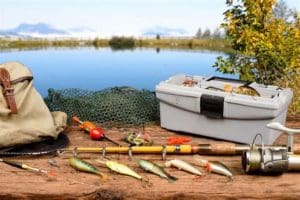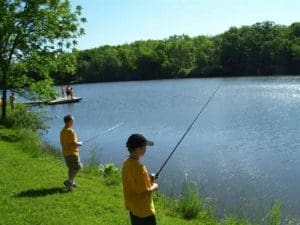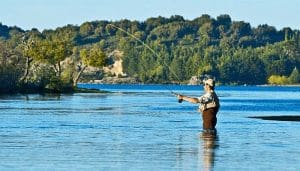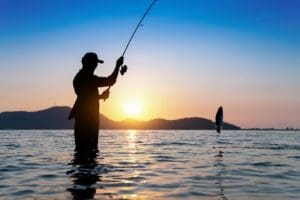
Fishing in lakes and reservoirs offers an incredible opportunity to enjoy nature, relax, and possibly catch some impressive fish. This comprehensive guide will walk you through everything you need to know to succeed, whether you’re a beginner or a seasoned angler.
Contents
Understanding Lakes and Reservoirs🐟
Before casting your line, it’s crucial to understand the unique characteristics of lakes and reservoirs. These water bodies differ significantly from rivers and streams, making fishing here a distinct experience.
What Sets Lakes and Reservoirs Apart?
-
- Lakes are naturally occurring water bodies with ecosystems that have evolved over centuries.
- Reservoirs, on the other hand, are artificial and often created for purposes such as water storage or power generation.
Both environments host diverse fish populations, but their artificial or natural nature may influence fish behavior and distribution. Discover fascinating insights about the ocean’s most enigmatic predators in Unraveling the Secrets of Sharks: Enigmatic Predators.
Essential Gear for Fishing in Lakes and Reservoirs🐟
Transitioning to the right equipment ensures a successful fishing trip. Let’s explore the essentials.
Fishing Rods and Reels
-
- Spinning Rods: Perfect for beginners due to their ease of use.
- Baitcasting Reels: Ideal for more experienced anglers seeking precision.
Bait and Lures
Choosing the right bait is essential. Fish in lakes and reservoirs respond to:
-
- Live bait, such as worms or minnows.
- Artificial lures, like crankbaits, jigs, or soft plastics.
Other Tools to Bring
-
- Fishing line: Match it to the species you’re targeting.
- Tackle box: Keep your gear organized.
- Fish finder: Especially useful in reservoirs to locate fish more easily.
Best Practices for Fishing in Lakes and Reservoirs🐟
Transitioning from preparation to action, understanding these techniques is vital for success.
1. Know the Habitats
Fish tend to gather in specific areas, such as:
-
- Weed beds: Perfect hiding spots for prey.
- Drop-offs: Sudden changes in depth attract larger fish.
- Structures: Submerged trees or rocks are hotspots for feeding.
2. Timing Your Trip
-
- Early morning or late evening is often best, as fish are most active during cooler periods.
- In reservoirs, seasonal changes may influence fish behavior more significantly.
3. Adjusting Your Techniques
Experiment with:
-
- Casting distance: Fish may be closer to the shore in the morning.
- Retrieval speed: Vary your pace to mimic natural prey.
Common Fish Found in Lakes and Reservoirs🐟
Transitioning to the types of fish you might catch, understanding your target species is crucial.
Popular Species
-
- Bass: Largemouth, smallmouth, and spotted bass are commonly found.
- Trout: Especially in colder, clearer reservoirs.
- Catfish: Known for their strength and preference for bottom-dwelling habitats.
- Panfish: Such as crappie, bluegill, and perch.
Seasonal Tips for Fishing in Lakes and Reservoirs🐟
Adjusting your strategy based on the season maximizes your chances of a good catch. Take your cooking skills to the next level with these delicious ideas in 5 Recipes with Corvina Fish to Elevate Your Culinary Skills.
Spring
-
- Fish move closer to the shore as they prepare to spawn.
- Use brightly colored lures to attract them.
Summer
-
- During the heat, fish retreat to deeper, cooler waters.
- A fish finder becomes invaluable.
Autumn
-
- Fish become more active as they feed heavily before winter.
- Use bait that mimics natural prey like minnows.
Winter
-
- Ice fishing may be an option in certain lakes and reservoirs.
- Slow down your retrieval speed to match the sluggish behavior of fish.
Conservation and Ethics🐟
While enjoying your fishing adventures, consider the environment.
-
- Catch and release: Practice this to preserve fish populations.
- Leave no trace: Avoid leaving fishing line, bait, or trash behind.
- Know the rules: Check local regulations regarding limits and protected species.

